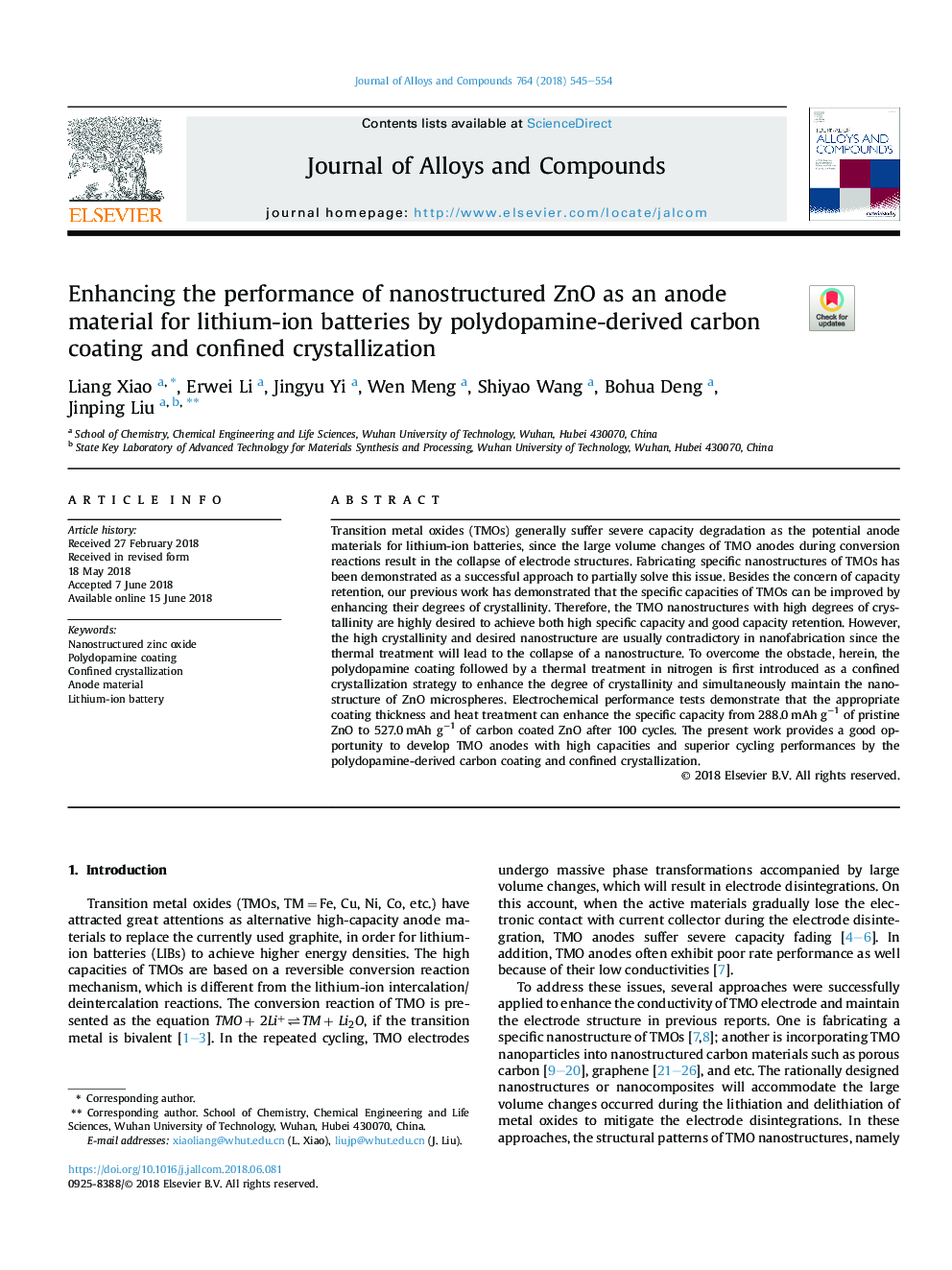| Article ID | Journal | Published Year | Pages | File Type |
|---|---|---|---|---|
| 7990699 | Journal of Alloys and Compounds | 2018 | 10 Pages |
Abstract
Transition metal oxides (TMOs) generally suffer severe capacity degradation as the potential anode materials for lithium-ion batteries, since the large volume changes of TMO anodes during conversion reactions result in the collapse of electrode structures. Fabricating specific nanostructures of TMOs has been demonstrated as a successful approach to partially solve this issue. Besides the concern of capacity retention, our previous work has demonstrated that the specific capacities of TMOs can be improved by enhancing their degrees of crystallinity. Therefore, the TMO nanostructures with high degrees of crystallinity are highly desired to achieve both high specific capacity and good capacity retention. However, the high crystallinity and desired nanostructure are usually contradictory in nanofabrication since the thermal treatment will lead to the collapse of a nanostructure. To overcome the obstacle, herein, the polydopamine coating followed by a thermal treatment in nitrogen is first introduced as a confined crystallization strategy to enhance the degree of crystallinity and simultaneously maintain the nanostructure of ZnO microspheres. Electrochemical performance tests demonstrate that the appropriate coating thickness and heat treatment can enhance the specific capacity from 288.0â¯mAh gâ1 of pristine ZnO to 527.0â¯mAh gâ1 of carbon coated ZnO after 100 cycles. The present work provides a good opportunity to develop TMO anodes with high capacities and superior cycling performances by the polydopamine-derived carbon coating and confined crystallization.
Keywords
Related Topics
Physical Sciences and Engineering
Materials Science
Metals and Alloys
Authors
Liang Xiao, Erwei Li, Jingyu Yi, Wen Meng, Shiyao Wang, Bohua Deng, Jinping Liu,
